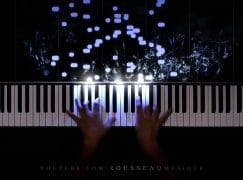Anyone recognise these Chopin hands?
mainHere’s the only identification of this Youtube performance: Hello, I’m Rousseau, I make piano covers of classical and pop songs with a reactive visualizer.
Clearly, the pianist can play.
But who or what is Rousseau, and has the sound been legitimately recorded or lifted, Hatto-like, from a professional artist?
One of our readers comments: If this is genuine, then the performer is very fine indeed. But that seems unlikely. More likely is that the performance was recorded at slow tempo and then sped up (it’s a MIDI piano). Note the ending, where the hands disappear in a flash.






Comments